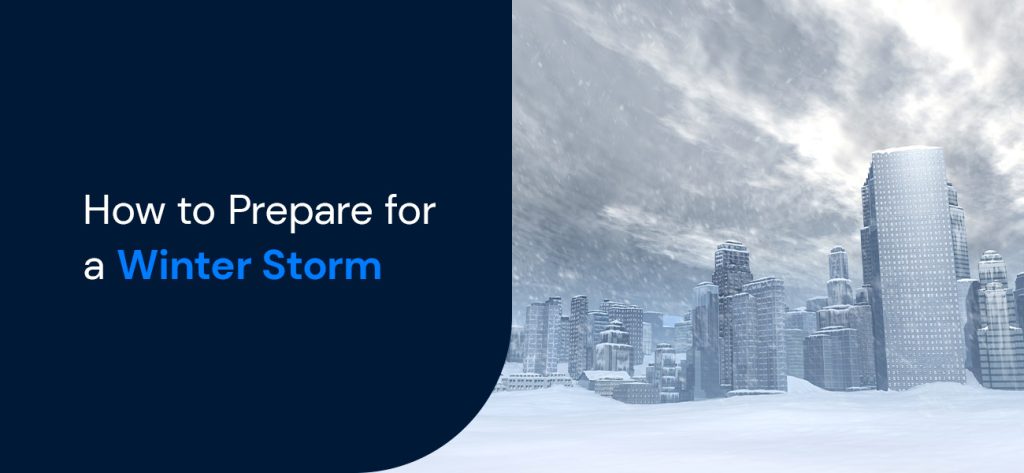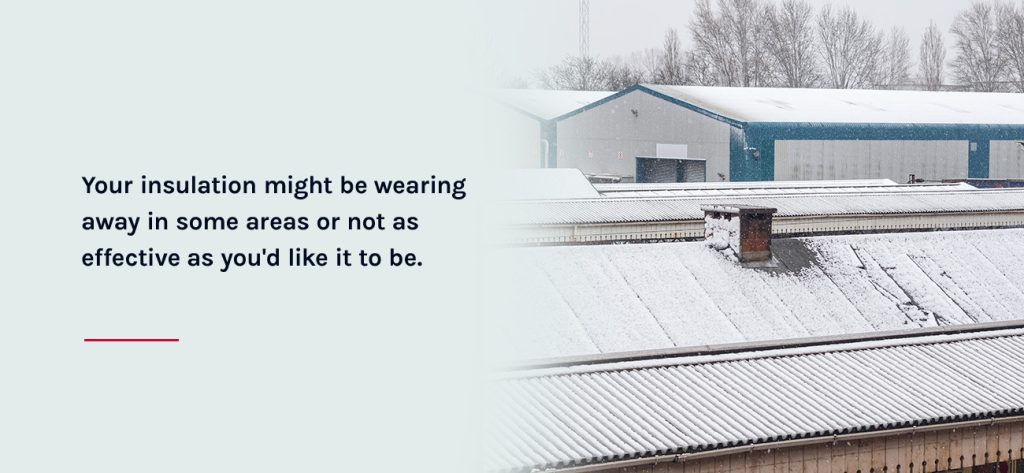
A winter storm has a variety of effects. It can turn sidewalks into safety hazards, flood a building with burst pipes or cut off access to essential utilities. Every business is different, so there is no one-size-fits-all solution for commercial winter preparedness plans. Instead, you’ll need to have a comprehensive understanding of your property, including potential threats, resources and mission-critical business needs.
Consider factors like:
Before the snow or subzero temperatures hit, spend some time checking on these aspects of your building to prep for winter storms.
Your heating, ventilation and air conditioning (HVAC) system works hard in the winter. Have it inspected and address any issues such as:
You may also want to cover up any outdoor AC units that won’t be used and make sure the system properly ventilates any exhaust gasses.

Your insulation might be wearing away in some areas or not as effective as you’d like it to be. Consider whether it’s time to replace or repair your insulation, especially in unheated areas like attics or warehouses. Inspect insulation for holes or damage, and evaluate how the building’s heat loss might be affecting your energy costs. Improving insulation can bring down utility bills, minimize your carbon footprint and reduce strain on your HVAC system.
A similar concern is draftiness. Drafts often occur through the gaps around windows and doors and cracks in walls. Look into weatherstripping products, repairs or caulking to help seal up these holes. Eliminating drafts offers the same advantages as improving insulation, with the added benefit of blocking up spaces where moisture or pests could enter the building.
Plumbing issues can be some of the most expensive effects of winter storms. Freezing temperatures can cause pipes to burst and flood a building, leading to water damage and unnecessary downtime. Prevention is the best approach. Here are some ways to prep for snow storms and the effects of cold temperatures on your plumbing:
Between heavy snow and high levels of moisture, roofs can be under significant stress in the winter. Before the snow hits, inspect the roof for any signs of damage, including holes, loose shingles or structural problems. These issues could lead to leaks — and subsequent mold or rot — or more damage after a harsh storm. Along with overt damage, you’ll also need to consider how your roof will respond to ice dams and high snow loads.
Ice dams are thick sheets of ice that form on the edge of the roof, usually due to inconsistent heating. They occur when the snow melts on one part of the roof and travels to the edge, where the temperature is lower and water can refreeze. These heavy slabs of ice can damage your gutters and melt into large pools of water that could cause rot, mold and roof damage. Stay proactive in preventing ice dams by fixing any air leaks and improving insulation.
You’ll also need to keep an eye out for excessive snow load. Snow load is the pressure exerted on the roof from the weight of compacted snow. Some roofs are more prone to heavy snow loads than others, such as low-sloped or saw-toothed roofs. Consider the age of your building and whether structural changes might be in order. Get a professional inspection, and watch for signs of potential collapse, like leaks, cracked roof joints and sagging sprinkler heads.
A disaster plan is a vital part of any organization’s emergency response. Knowing what to do in these situations can keep people in the building safe and minimize damage and recovery costs. These plans should be robust, and it’s usually a good idea to work with emergency response professionals when developing one.
Your disaster plan should cover information on:
A disaster plan won’t do much if employees don’t know how to use it. Emphasize training, regular drills and strong communication about new protocols.
Winter weather threats are similar for individuals and businesses, but businesses have a responsibility to keep people on the property safe. Here are some safety tips to prepare for a snow storm:
When winter emergencies happen, Ultimate Restoration is on call for your business. With a wide range of emergency response services, we can get you back to work as soon as possible after a storm or other disaster. Our planning and consulting services help you minimize risk and be prepared for whatever mother nature has to offer.
Snowfall is just around the corner. URI can help you get ready for it. Reach out today to learn more!